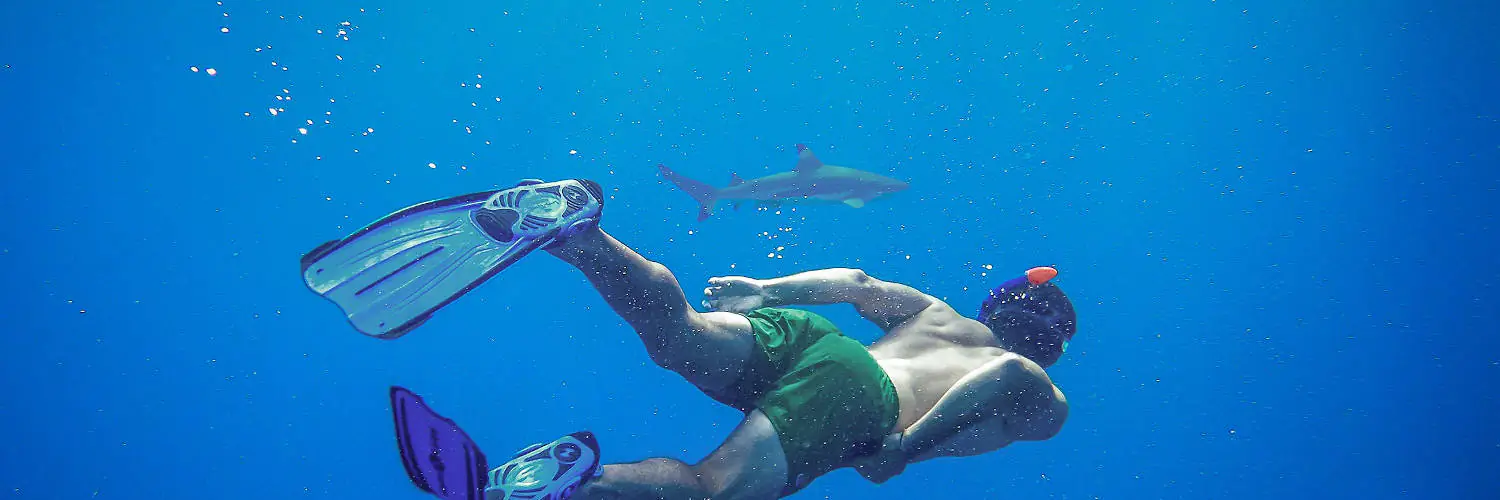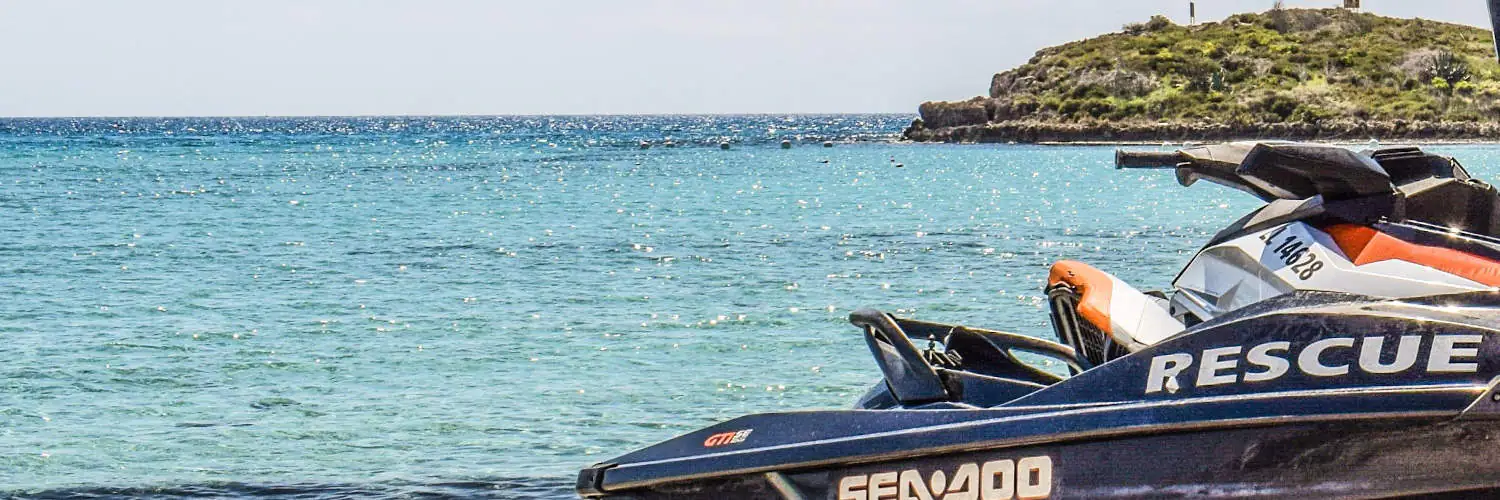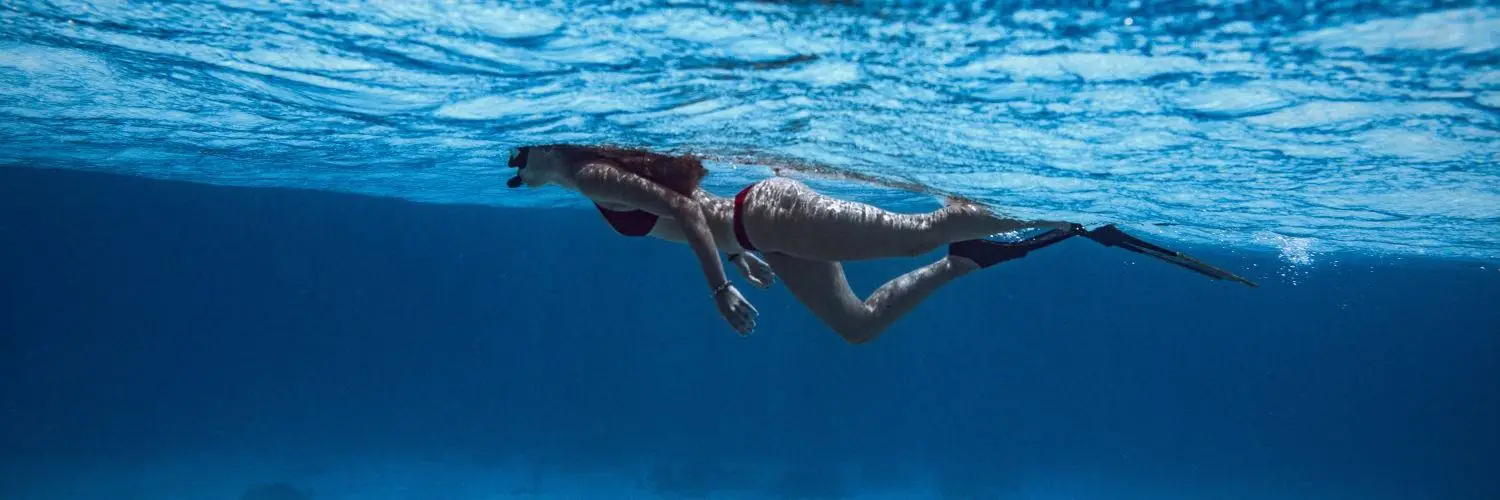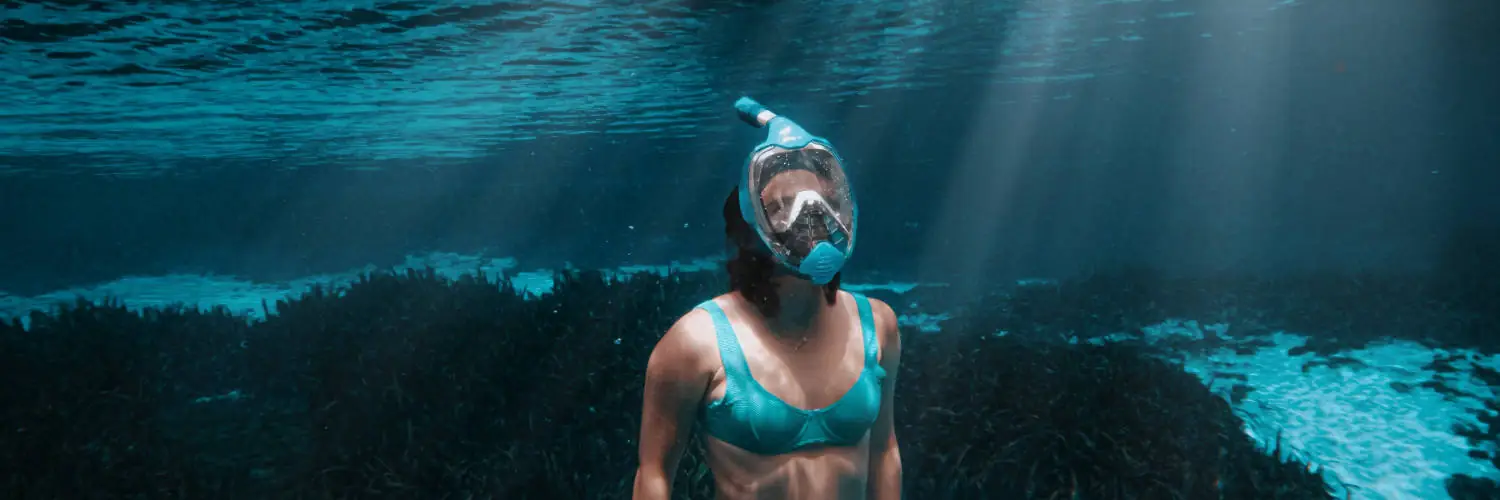Table of Contents
Snorkeling Underwater: Essential Tips for a Safe Adventure
Snorkeling is a popular aquatic activity that enables individuals to explore the underwater world with relative ease. Equipped with a diving mask, a shaped breathing tube called a snorkel, and usually fins, snorkelers can float on the ocean’s surface and observe the marine life below. This activity offers a unique opportunity to encounter a variety of sea life in their natural habitat without the need for complex scuba diving equipment or extensive training. The clear waters found in many parts of the world provide an ideal setting for snorkelers to immerse themselves in the vibrant colors and movements of coral reefs and schools of fish.
To successfully snorkel underwater, one needs to master a few basic techniques. Proper breathing through the snorkel is essential and involves taking deep, controlled breaths to stay relaxed and buoyant. Knowing how to clear the snorkel of water and equalize ear pressure helps to keep the experience comfortable and enjoyable. Additionally, an awareness of the ocean environment and respect for the underwater ecosystems are important for the safety of both the snorkeler and the marine organisms. With the right approach, participants can safely enjoy the beauty of the ocean’s underwater landscapes and the fascinating creatures that inhabit them.
Essential Snorkeling Equipment
Choosing the proper snorkeling gear is crucial for a comfortable and safe underwater experience. It involves selecting a mask that fits well, a snorkel that matches the diver’s needs, and fins that provide efficient movement through the water.
Choosing the Right Mask
The mask is a vital piece of snorkeling equipment, providing a clear view underwater. It should fit snugly to prevent water from leaking in, yet be comfortable against the face. For optimal clarity, masks with tempered glass lenses and a silicone skirt are recommended. Full-face masks offer a wide view and incorporate the snorkel, but traditional mask-and-snorkel sets provide a more customary snorkeling experience.
Snorkel Types
There are several snorkel types to consider based on personal preference and water conditions:
- Dry Snorkel: Features a mechanism that prevents water from entering the tube when submerged.
- Semi-Dry Snorkel: Has a splash guard which reduces water entry from surface splashing.
- Flexible Snorkel: Usually has a flexible tube portion which makes storage easier and often includes a comfortable mouthpiece.
- Full-face masks combine the snorkel within the mask design, which can be suitable for beginners looking for ease of use.
Fins and Footwear
Snorkeling fins, also called flippers, enhance propulsion, making swimming effortless. Fins come in full-foot or open-heel designs — full-foot fins are worn barefoot, while open-heel fins require booties and can be adjusted for a better fit. Snorkelers should look for fins that balance comfort with an efficient fin blade design that aids movement without causing fatigue.
Snorkeling Techniques and Safety
In snorkeling, technique and safety are intertwined; proper breathing, buoyancy control, and adherence to safety practices ensure an enjoyable experience while minimizing risks.
Breathing Basics
Proper breathing technique is essential for a relaxing snorkeling experience. Snorkelers should breathe slowly and deeply through the snorkel tube, which often includes a purge valve to clear water out. The use of the Valsalva maneuver, pinching the nose and exhaling gently against closed nostrils, can help equalize ear pressure, enhancing comfort underwater.
Managing Buoyancy
Controlling buoyancy is a key skill, allowing snorkelers to float effortlessly and avoid disturbing marine life. Relaxation and controlled breathing contribute to buoyancy management. It is crucial to adjust one’s buoyancy to remain neutrally buoyant to conserve energy and air, and to prevent contact with coral or sea creatures like sharks or whale sharks.
- Floating: Use a relaxed, horizontal position to float on the water’s surface.
- Breath Hold: Take a deep breath to aid in floating, and exhale to sink slightly for a better view of the underwater environment.
Safety Practices
Safety is paramount in snorkeling. Snorkelers should never snorkel alone; a buddy system increases the safety factor significantly. They should be aware of their fitness level and avoid strenuous activity or strong currents and waves. Additionally, it’s important to check weather conditions before entering the water. Choppy water or poor conditions can increase the chance of accidents. Awareness of marine life, such as sharks, is critical for safety, but most marine creatures pose little risk if treated with respect and caution.
- Equipment Check: Ensure all gear is functioning correctly, including the snorkel’s valve and mask seal.
- Environmental Awareness: Check for local warnings, such as strong currents or presence of hazardous wildlife.
By focusing on these techniques and safety measures, snorkelers can enjoy the underwater world while maintaining their well-being.
Marine Exploration and Etiquette
Exploring marine environments through snorkeling brings one face to face with the delicate balance of underwater ecosystems. It’s crucial to engage with this world in a way that preserves its beauty and health.
Interacting with Marine Wildlife
When encountering marine life such as fish, sea turtles, rays, and dolphins, snorkelers should maintain a respectful distance. It is essential to avoid touching or disturbing these creatures, as they are integral parts of the ecosystem. A simple guideline is to observe calmly and allow any interactions to be on the terms of the wildlife, ensuring minimal impact on their natural behaviors.
Respect for Coral Reefs
Coral reefs are vital to ocean health but are highly susceptible to damage. Snorkelers must navigate coral formations with care to prevent breakage or stress to these living organisms. Avoid standing on or touching coral, as this can cause irreversible harm or even death to the sensitive polyps that make up the reef structure.
Underwater Photography Tips
When capturing the essence of underwater snorkeling destinations and their inhabitants with photography:
- Use natural light: Avoid artificial lighting which can disrupt the behavior of marine life.
- Maintain buoyancy: Keep a steady hand while floating to avoid stirring up sediment or colliding with the reef.
- Be patient: Wait for nature to present the perfect shot, rather than chasing or coercing wildlife into specific poses.
By adhering to these practices, snorkelers can enjoy the splendors of the ocean responsibly, taking home only memories and leaving behind only ripples.
Planning Your Snorkeling Adventure
A well-planned snorkeling trip can lead to an exceptional underwater experience. Choosing the right destination, knowing what to pack, and deciding on the ideal time are crucial steps for a successful snorkeling adventure.
Selecting a Snorkeling Destination
When picking a snorkeling location, individuals should consider both the marine life and the underwater terrain. Destinations like the Maldives and Bali are praised for their diverse aquatic ecosystems and clear waters, making them among the best places to go snorkeling. Other factors to consider include the destination’s proximity, overall vacation cost, and whether equipment is available for rent onsite.
- Top Locations:
- The Maldives
- Bali
- Great Barrier Reef
- Hawaiian Islands
What to Bring
A snorkeler must be prepared with the right equipment for their venture underwater. Essential items include a snorkeling mask, fins, and snorkel. Additional gear such as an underwater camera can enhance the experience. Sun protection is critical; snorkelers should apply water-resistant sunscreen to shield themselves from the sun’s rays and wear UV-protective clothing if possible.
- Snorkeling Checklist:
- Mask and Snorkel
- Fins
- Sunscreen (SPF 50 or higher)
- UV Protection Clothing
- Underwater Camera (optional)
- Snorkeling Vest (for buoyancy and safety)
When to Go
The best time for snorkeling largely depends on the chosen destination. Ideal visiting times for optimal visibility and marine life vary, but many tropical locations are prime from June to August. Some destinations might be less crowded and more inexpensive during the shoulder seasons. Travelers must research the specific weather patterns and tourist seasons at their chosen location.
- Destination Seasonality:
- The Maldives: November to April
- Bali: May to September
- Caribbean: December to April
By considering these key aspects, snorkelers can have an enjoyable and memorable experience exploring the underwater world.








